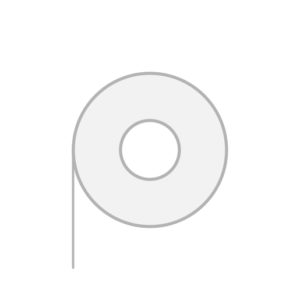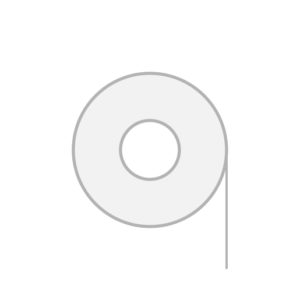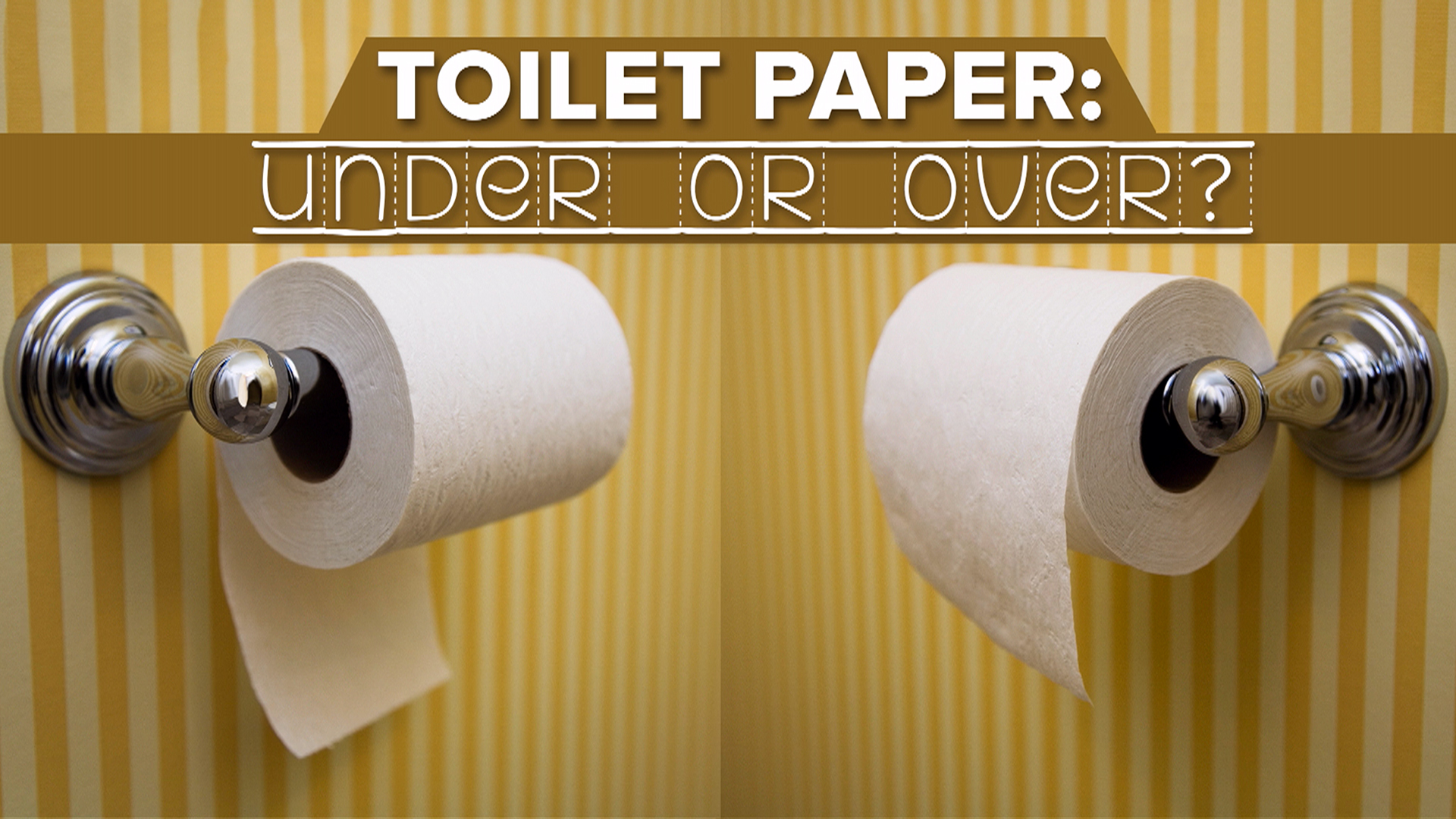Who’s right?
Toilet paper is by now an object taken for granted, and we often use it involuntarily, but the positioning of the paper in the holder is not obvious to all. As a matter of fact, there are different opinions about that: some people think it is right to be in the over position, whereas others are in the under position.
Differences
Despite looking like a small-time issue, some differences have been listed:

OVER: the paper doesn’t hit the wall, resulting in being more hygienic; it’s easier to find and grasp the loose end; the loose end is easier to fold, especially in hotels to show the room has been cleaned; it’s easier to see the brand or the pattern of the paper.
UNDER: the paper looks tidier because the loose end is more hidden; it’s harder for house pets or toddlers to unroll the paper; a recreational vehicle may reduce unrolling during driving (Wikipedia).
Wheeler’s patent
Luckily some pictures give us a hint on how was the original positioning. They are from the original patent of the paper roll invented by Zeth Wheeler in 1871 (Google patents). The pictures show that the right position is over. Despite the patent of the roll, Mr. Wheeler is not the original inventor of the toilet paper. For that, we need to go back to 1857, the year when Joseph C. Gayetty sold the first toilet paper in flat sheets.

Today toilet paper is still the same Wheeler invented, but with some other characteristics: more layers, different paper structures, sometimes scented, sometimes colored. In a way, fantasy and creativity have backed out neither in front of such an intimate and taboo product.
We cannot say the same thing for a country like Japan where toilet paper is an unnecessary accessory because the technology of the toilets has advanced so much that all you need to clean yourself is part of the toilet.

Apparently, the question is more about our personal habits rather than any other technical matters. There are solutions that satisfy everybody, though: using two holders with inverted paper rolls or a multi-orientable paper roll holder.
However, a recent study conducted at the University of Colorado revealed that even apparently clean bathrooms may be very dirty.
Researchers discovered 19 bacteria groups on the doors, floors, faucet handles, soap dispensers, and toilets of 12 public restrooms in Colorado, comprising six men’s restrooms and six women’s restrooms, that may be spread by touching contaminated surfaces.
Much of the bacteria found in public restrooms is e. coli from human feces. E. coli can easily pass from surfaces to your fingers, and so to anything you eat with your hands.
This brings us to hanging toilet paper. The moment when a restroom user’s hands are most likely to carry bacteria is when they reach for toilet paper.
If the toilet paper is hung “over”, their fingers will only come into contact with the toilet paper they will use, which will then be flushed.
However, if the toilet paper is hung “under” there’s a good chance their fingers will touch the wall as well, leaving a deposit.
If this is the case, any subsequent restroom user who reaches for toilet paper risks picking up not just the bacteria that has already been deposited but also leaving more for the next user.
The “under” hang, as well as the chance of contacting the wall, makes it more difficult to use a scrap of toilet paper to avoid directly touching the toilet seat, flush handle, or stall lock without picking up bacteria from the wall.
It’s nearly impossible to get bacteria off your hand once they are there. Most people’s method of handwashing, a couple of seconds with a dab of soap, is ineffective. You should scrub your hands for at least 20 seconds with a lather to get them completely clean.

